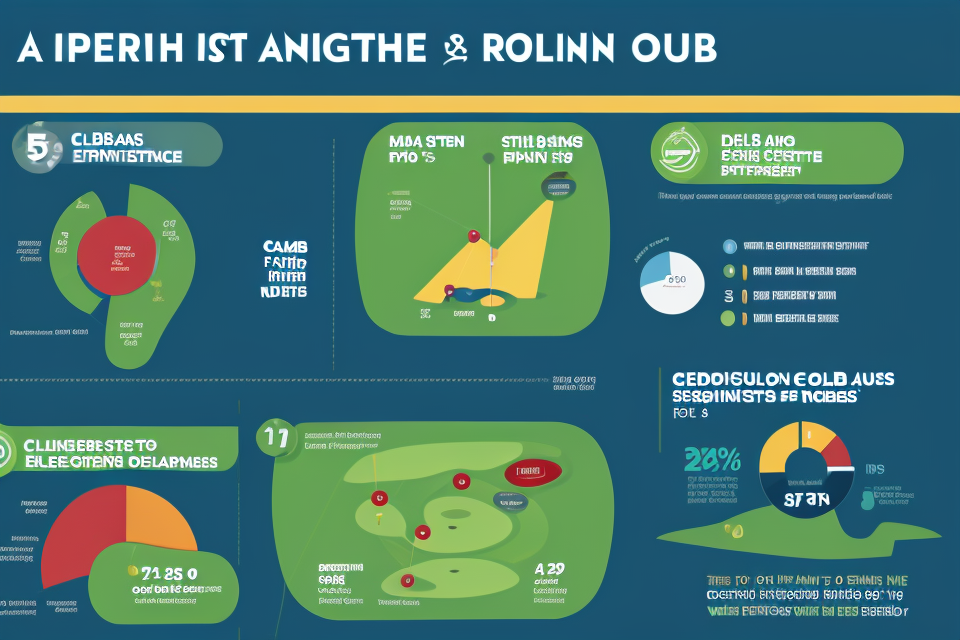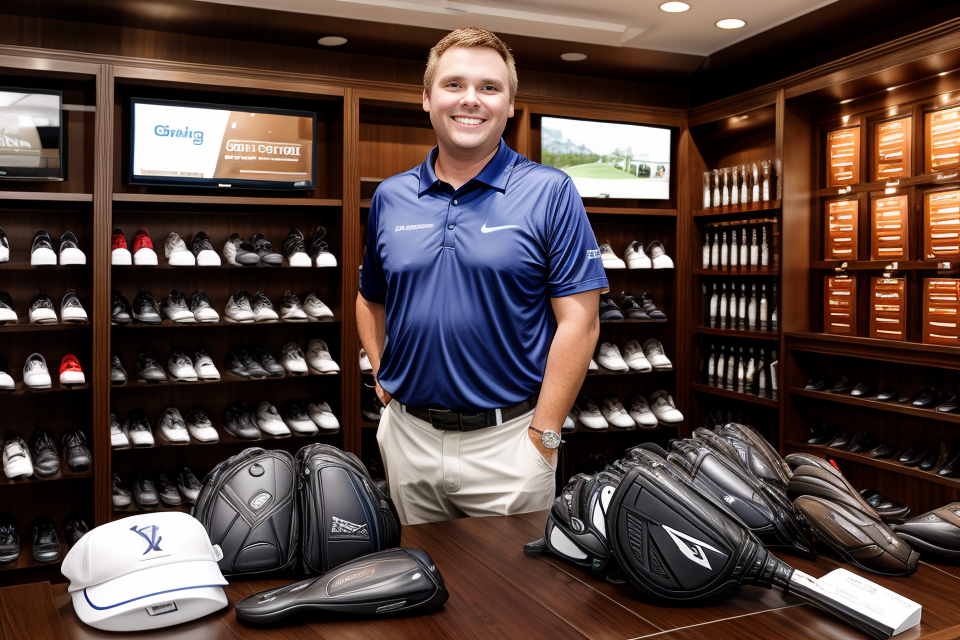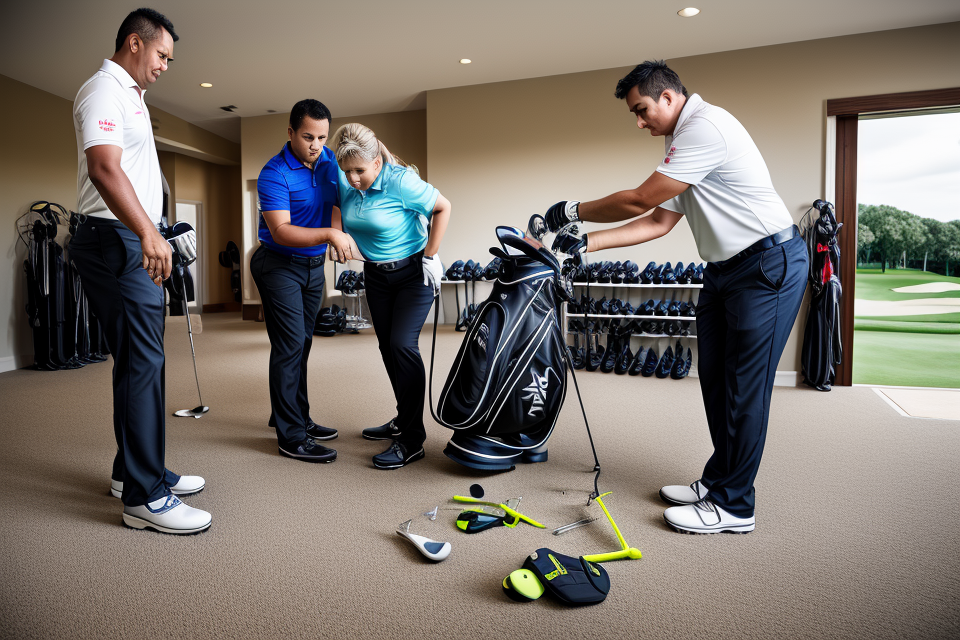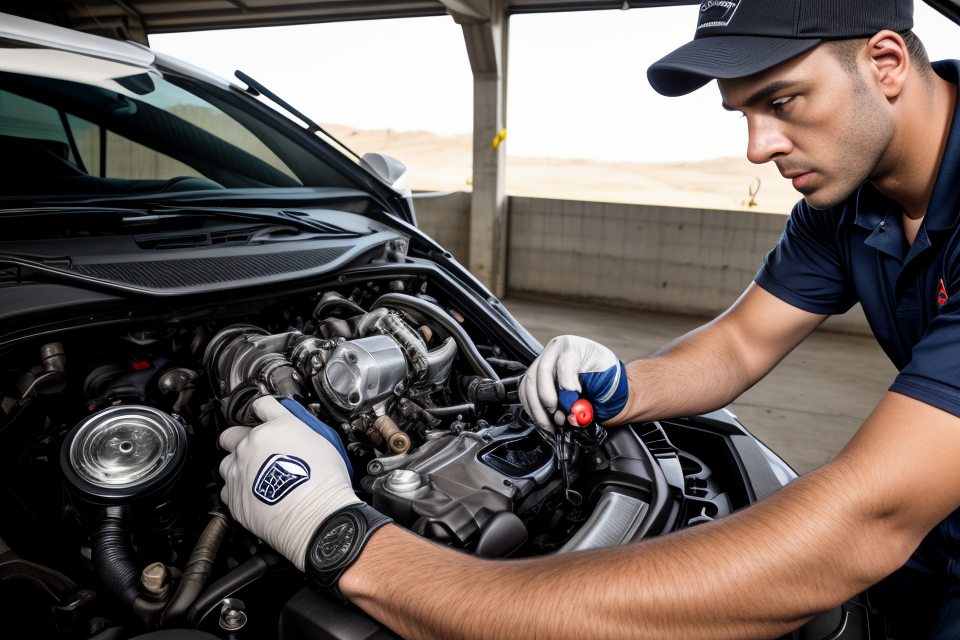
Are you tired of inconsistent drives and shots off the fairway? Do you find yourself struggling to hit that perfect shot? Then it might be time to consider getting your clubs fitted. Club fitting is the process of customizing your golf clubs to your unique playing style, body type, and swing characteristics. This can help improve your accuracy, distance, and overall performance on the course. In this article, we’ll explore how club fitting can impact your golf game and give you the tools to take your swing to the next level. So, grip your golf clubs tightly and let’s dive into the world of customized golf equipment!
Club fitting can have a significant impact on your golf game by ensuring that you are using clubs that are tailored to your individual swing and physical characteristics. When clubs are properly fitted, they can help improve your accuracy, distance, and overall ball striking ability. Additionally, clubs that are fit to your specifications can also help reduce the risk of injury and improve your comfort on the course. Proper club fitting can also help you achieve a more consistent ball flight and shot shape, leading to better scores and a more enjoyable golfing experience. Overall, club fitting is an essential aspect of improving your golf game and should be considered by golfers of all skill levels.
What is Club Fitting?
Understanding the Process
Golf club fitting refers to the customization of golf clubs to suit the individual needs and preferences of a golfer. This process involves assessing a golfer’s physical attributes, swing mechanics, and playing style to determine the optimal specifications for their golf clubs. The goal of club fitting is to help golfers improve their performance by providing them with clubs that are tailored to their unique needs.
Why club fitting matters for golfers
Club fitting is important for golfers because it can have a significant impact on their game. When a golfer uses clubs that are not properly fit for their swing and physical attributes, it can lead to reduced power, accuracy, and consistency. On the other hand, clubs that are fitted to a golfer’s specifications can lead to improved performance, increased distance, and greater accuracy.
Factors considered during club fitting
During the club fitting process, several factors are considered to determine the optimal specifications for a golfer’s clubs. These factors include:
- Physical attributes: The golfer’s height, weight, and arm length are used to determine the appropriate length and flex of the golf clubs.
- Swing mechanics: The golfer’s swing speed, tempo, and path are analyzed to determine the best shaft flex and clubhead speed for their swing.
- Playing style: The golfer’s preferences for ball flight, spin, and feel are taken into account when selecting the appropriate clubhead design and material.
The benefits of club fitting
The benefits of club fitting are numerous. Some of the most significant benefits include:
- Increased distance: Properly fitted clubs can help golfers maximize their swing speed and power, resulting in increased distance.
- Improved accuracy: Clubs that are fitted to a golfer’s specifications can help improve their accuracy by reducing hooks and slices.
- Better feel and control: Clubs that are fitted to a golfer’s preferences can help them achieve a better feel for the golf ball, resulting in greater control over their shots.
Overall, club fitting is a crucial aspect of improving a golfer’s performance. By customizing their clubs to their specific needs and preferences, golfers can enjoy greater success on the course.
Benefits of Club Fitting
- Improved accuracy
Club fitting can help golfers achieve greater accuracy by ensuring that the clubs they use are perfectly suited to their swing and playing style. By using clubs that are tailored to their individual needs, golfers can reduce their shot dispersion and improve their overall accuracy on the course. - Increased distance
Club fitting can also help golfers increase their distance off the tee and from the fairway. By using clubs that are optimized for their swing speed and ball flight, golfers can generate more power and distance, allowing them to reach the green in regulation more often. - Enhanced consistency
Club fitting can also improve a golfer’s consistency by ensuring that their clubs are properly aligned and balanced. By using clubs that are properly fit to their body and swing, golfers can reduce their tendency to hook or slice the ball, resulting in more consistent ball flight and direction. - Better ball control
Finally, club fitting can help golfers gain better control over their shots, allowing them to shape the ball more effectively and hit precise shots into the wind or around the green. By using clubs that are tailored to their individual needs, golfers can improve their ball control and hit more accurate approach shots and greenside chips.
Types of Club Fitting
Dynamic Club Fitting
Dynamic club fitting involves using launch monitors and other advanced technology to analyze the golfer’s swing and ball flight. This type of fitting is often used by tour professionals and top amateurs who are looking to optimize their equipment for maximum performance. The process typically involves a comprehensive assessment of the golfer’s swing mechanics, ball flight patterns, and launch conditions. Based on this data, a club fitter can recommend specific clubs and shafts that will help the golfer achieve their desired ball flight and distance.
Static Club Fitting
Static club fitting involves the golfer hitting shots with a variety of clubs to determine which ones feel and perform the best. This type of fitting is often used by recreational golfers who are looking for a more personalized approach to equipment selection. The process typically involves the golfer hitting shots with a range of clubs, including drivers, fairway woods, hybrids, irons, and wedges. The club fitter will then make recommendations based on the golfer’s preferences and swing characteristics.
In-Store Club Fitting
In-store club fitting is a type of fitting that is conducted in a retail setting, such as a golf shop or department store. This type of fitting is often used by casual golfers who are looking for a basic fitting experience. The process typically involves the golfer hitting shots with a range of clubs, and the club fitter will make recommendations based on the golfer’s preferences and swing characteristics.
Mobile Club Fitting
Mobile club fitting is a type of fitting that is conducted at the golfer’s home or on the golf course. This type of fitting is often used by busy professionals or golfers who prefer a more convenient fitting experience. The process typically involves the club fitter bringing a range of clubs and equipment to the golfer’s location, and the golfer hitting shots with the clubs while the club fitter analyzes the ball flight and makes recommendations.
The Importance of Proper Club Length
Factors Affecting Club Length
Club length plays a crucial role in determining the accuracy and distance of a golf shot. It is important to select the right club length to optimize the performance of your golf game. There are several factors that can affect the appropriate club length for a golfer.
- Height: Taller golfers typically require longer clubs to generate enough power and reach the ball. Conversely, shorter golfers may benefit from shorter clubs that are easier to control.
- Swing speed: A golfer’s swing speed can also impact the appropriate club length. Golfers with higher swing speeds may be able to generate more power with longer clubs, while slower swing speeds may require shorter clubs to maintain control and accuracy.
- Posture: A golfer’s posture can also impact the appropriate club length. Golfers with a more upright posture may require longer clubs to reach the ball, while golfers with a more bent-over posture may benefit from shorter clubs.
- Strength: Finally, a golfer’s strength can also impact the appropriate club length. Golfers with more upper body strength may be able to generate more power with longer clubs, while golfers with less strength may benefit from shorter clubs that are easier to control.
By taking these factors into account, golfers can select the right club length to optimize their performance on the golf course. Proper club length can lead to increased accuracy, distance, and overall performance, which can help golfers of all skill levels improve their game.
Measuring Your Club Length
When it comes to golf clubs, one of the most important factors that can impact your game is the length of your clubs. It is crucial to have clubs that are the right length for your body and swing, as this can have a significant impact on your ability to hit the ball accurately and with power.
So, how do you measure the length of your golf clubs? The first step is to measure the length of your club from the top of the grip to the bottom of the clubhead. This measurement should be taken with the club laid flat on a table or surface, with the shaft pointing straight up and down.
To ensure accuracy, it is important to use a measuring tape that is specifically designed for golf clubs. These tapes are typically marked with increments of 1/2 inch, which makes it easy to get an accurate measurement.
Once you have measured the length of your club, you can compare it to the standard lengths for different types of clubs. For example, a standard driver length is typically around 45-46 inches, while a standard putter length is around 33-35 inches.
Measuring the length of your clubs is important because it ensures that you have clubs that are the right length for your body and swing. If your clubs are too short, you may have difficulty hitting the ball with power and accuracy. On the other hand, if your clubs are too long, you may have difficulty controlling your shots and may be more prone to mishits.
In addition to affecting your ability to hit the ball, having the wrong length clubs can also impact your posture and swing mechanics. For example, if your clubs are too short, you may lean forward excessively in your swing, which can lead to poor posture and an increased risk of injury.
Overall, measuring the length of your golf clubs is a crucial step in ensuring that you have the right equipment for your game. By taking the time to measure your clubs and ensure that they are the right length, you can improve your accuracy, power, and overall performance on the course.
Choosing the Right Club Length
When it comes to choosing the right club length, there are several factors to consider. The length of your clubs can affect your swing, your ability to control the ball, and your overall performance on the golf course.
Factors to consider:
- Your physical attributes (height, arm length, etc.)
- Your swing type (full swing, chip shot, etc.)
- Your personal preferences (comfort, feel, etc.)
How to determine the best length for you:
- Consult with a professional club fitter who can measure and recommend the best length for your clubs based on your physical attributes and swing type.
- Use a club length chart to determine the appropriate length for each club in your bag.
- Try different lengths and experiment with different clubs to find the ones that work best for you.
Remember, the right club length can make a significant difference in your golf game. It can help you improve your accuracy, increase your distance, and make your shots more consistent. So, it’s essential to choose the right length for each club in your bag to ensure that you’re getting the most out of your game.
Adjusting Your Golf Clubs
Loft and Lie Adjustments
Understanding Loft and Lie
Golf club loft and lie refer to the angle at which the clubhead meets the ball. Loft is the angle between the clubface and the plane of the swing, while lie is the angle between the shaft and the ground. Both loft and lie play significant roles in determining the trajectory and spin of the ball.
The Importance of Proper Loft and Lie
Adjusting the loft and lie of your golf clubs can greatly impact your performance on the course. By ensuring that your clubs are properly fitted to your swing, you can optimize your ball flight and achieve better results. This is particularly important for golfers with slower or faster swing speeds, as well as those with a higher or lower ball flight.
How Adjustments Can Improve Your Game
Loft and lie adjustments can help you achieve greater accuracy and distance control. By adjusting the loft of your driver, for example, you can increase your ball’s trajectory and reduce the amount of spin, resulting in longer drives. Conversely, increasing the loft of your wedges can help you control your approach shots and achieve more precise distance.
Loft and Lie Adjustment Tools
Fortunately, modern technology has made it easier than ever to adjust the loft and lie of your golf clubs. Many golf clubs now come with adjustable hosels, which allow you to change the angle of the shaft in relation to the clubhead. Some clubs also offer interchangeable shafts with different lie angles, allowing you to customize your set to your specific needs.
Additionally, many golf courses now offer club-fitting services, where you can have your clubs professionally adjusted to ensure optimal performance. These services often utilize state-of-the-art technology, such as launch monitors and TrackMan, to precisely measure your ball flight and make adjustments accordingly.
In conclusion, club fitting, specifically loft and lie adjustments, can greatly impact your golf game by optimizing your ball flight and distance control. By understanding the importance of proper loft and lie and utilizing the various adjustment tools available, you can take your game to the next level.
Shaft Adjustments
Understanding Shaft Flex
In golf, the shaft is the component that connects the golf club head to the handle. It plays a crucial role in determining the trajectory and distance of the golf ball. One of the essential aspects of golf club fitting is understanding the shaft flex.
Shaft flex refers to the amount of bending that a shaft can undergo during a golf swing. The flexibility of a shaft is typically classified into different categories based on its torque and bend profile. The flexibility of a shaft can significantly impact the golfer’s performance.
How Shaft Flex Affects Your Game
The shaft flex that you choose can have a direct impact on your golf game. A shaft that is too stiff can lead to a decrease in ball speed and distance, while a shaft that is too flexible can result in a loss of control over the ball. The right shaft flex should provide the optimal balance between control and power.
When you swing a golf club, the shaft flexes, and the flexibility of the shaft can affect the speed and direction of the golf ball. A shaft that is too stiff can result in a slower swing speed, which can reduce the distance of your shots. On the other hand, a shaft that is too flexible can lead to a loss of control over the ball, resulting in a less accurate shot.
Tips for Selecting the Right Shaft Flex
Selecting the right shaft flex is crucial to optimizing your golf game. Here are some tips to help you select the right shaft flex:
- Consider your swing speed: A slower swing speed requires a more flexible shaft, while a faster swing speed requires a stiffer shaft.
- Choose the right flex for your game: If you prioritize control over power, choose a more flexible shaft. If you prioritize power over control, choose a stiffer shaft.
- Get fitted by a professional: A professional club fitter can help you determine the right shaft flex for your game by analyzing your swing and measuring your physical characteristics.
By selecting the right shaft flex, you can optimize your golf game and improve your performance on the golf course.
Grip Size and Style
Factors to consider
When choosing the right grip size and style for your golf clubs, there are several factors to consider. These include:
- Your hand size and shape
- Your playing style
- The shaft flexibility of your clubs
- The grip tape or wrap material
How to choose the right grip size and style
To choose the right grip size and style, you should first measure your hand size and shape. A standard grip size for most golfers is 0.58 inches, but this can vary depending on your hand size.
Your playing style is also an important factor to consider. If you have a fast swing speed, you may benefit from a smaller grip size, while a larger grip size may be more suitable for golfers with slower swing speeds.
The shaft flexibility of your clubs is another important consideration. If you have stiff shafts, you may want to choose a larger grip size to help reduce torque and improve accuracy.
Finally, the grip tape or wrap material can also affect your grip size and style choice. For example, if you prefer a firmer grip, you may want to choose a grip with a thicker tape or wrap material.
Overall, choosing the right grip size and style for your golf clubs can have a significant impact on your game. It can help improve your swing control, accuracy, and consistency, and ultimately lead to better performance on the course.
Hosel Adjustments
What are hosel adjustments?
Hosel adjustments refer to the modification of the angle between the club’s shaft and the clubhead’s hosel. The hosel is the part of the clubhead where the shaft is inserted, and it plays a crucial role in determining the club’s performance. Hosel adjustments are made to ensure that the golfer can hit the ball with more accuracy and control.
How they can improve your game
Hosel adjustments can have a significant impact on a golfer’s game. By adjusting the angle of the clubhead, the golfer can change the trajectory and spin of the ball, which can result in more accurate shots and better control over the ball’s flight. Additionally, hosel adjustments can help golfers to square the clubface at impact, which can improve the accuracy of their shots.
Types of hosel adjustments
There are several types of hosel adjustments that can be made to a golfer’s clubs. Some of the most common types of adjustments include:
- Opening the Hosel: This adjustment involves moving the clubhead’s hosel away from the shaft, which can help to reduce the spin on the ball and produce a higher, more draw-oriented ball flight.
- Closing the Hosel: This adjustment involves moving the clubhead’s hosel closer to the shaft, which can help to increase the spin on the ball and produce a lower, more fade-oriented ball flight.
- Square Hosel: This adjustment involves aligning the clubhead’s hosel with the shaft, which can help to produce a straight ball flight.
In conclusion, hosel adjustments can have a significant impact on a golfer’s game by improving the accuracy and control of their shots. Golfers can benefit from working with a professional club fitter to determine the best hosel adjustments for their individual swing and playing style.
The Role of Technology in Club Fitting
Advanced Technologies Used in Club Fitting
Golf club fitting has come a long way with the help of advanced technologies. Here are some of the technologies used in club fitting:
3D Printing
3D printing is a technology that allows the creation of three-dimensional objects from digital files. In golf club fitting, 3D printing is used to create custom-fit clubs. The club’s shaft and head are designed using computer-aided design (CAD) software, and then the club is printed using a 3D printer. This technology enables club fitters to create clubs that are tailored to the golfer’s physical characteristics, such as their height, weight, and swing speed.
Computer-Aided Design (CAD)
Computer-aided design (CAD) is a technology that allows designers to create detailed 2D or 3D drawings using a computer. In golf club fitting, CAD software is used to design the club’s shaft and head. The software takes into account various factors such as the golfer’s physical characteristics, swing speed, and ball flight. The design is then used to create the club using 3D printing or other manufacturing methods.
Motion Capture Technology
Motion capture technology is a technology that records the movement of a person’s body. In golf club fitting, motion capture technology is used to analyze the golfer’s swing. The golfer is fitted with sensors that track their movements during the swing. The data collected is then used to analyze the golfer’s swing and identify any flaws. The club fitter can then adjust the club’s specifications to match the golfer’s swing, resulting in better performance.
These advanced technologies have revolutionized the golf club fitting process, allowing club fitters to create custom-fit clubs that are tailored to the golfer’s physical characteristics and swing. The use of these technologies has led to improved performance and increased satisfaction among golfers.
The Future of Club Fitting
- Emerging trends
- Customization through artificial intelligence and machine learning algorithms
- Analysis of player data to optimize club selection and adjustments
- Increased use of 3D printing technology for custom clubheads and shafts
- Integration of virtual reality for an immersive club fitting experience
- Customization through artificial intelligence and machine learning algorithms
- How technology is changing the game
- Improved accuracy and precision in club fitting
- Advanced measuring tools and sensors for precise data collection
- Enhanced customization options for golfers
- Tailored club designs based on individual swing characteristics and preferences
- Greater accessibility to club fitting services
- Online platforms and remote fittings expanding the reach of club fitters
- Improved accuracy and precision in club fitting
FAQs
1. What is club fitting?
Club fitting is the process of selecting and adjusting golf clubs to optimize a player’s performance. It involves analyzing the golfer’s swing, body type, and playing ability to determine the best equipment for their game. The goal of club fitting is to improve the golfer’s accuracy, distance, and overall performance.
2. Why is club fitting important?
Club fitting is important because it ensures that a golfer has the right equipment for their game. Golf clubs that are not properly fitted can lead to inconsistent shots, reduced distance, and even injury. A proper club fit can help a golfer to improve their swing, increase their confidence, and enjoy the game more.
3. What happens during a club fitting session?
During a club fitting session, a golfer will typically meet with a professional fitter who will assess their swing, body type, and playing ability. The fitter will then recommend the appropriate clubs and shafts for the golfer’s game. The golfer will then hit some balls with the new equipment to ensure that it feels and performs correctly. The fitter will make any necessary adjustments to ensure that the golfer has the best possible equipment for their game.
4. How often should I get my clubs fitted?
It is recommended that golfers get their clubs fitted every few years, or whenever they experience a significant change in their swing or playing ability. However, some golfers may need to get their clubs fitted more frequently, depending on their level of play and the amount of use their clubs receive.
5. Can club fitting improve my golf game?
Yes, club fitting can definitely improve a golfer’s game. By ensuring that a golfer has the right equipment for their game, they can improve their accuracy, distance, and overall performance. Additionally, having the right equipment can help a golfer to develop a more consistent and confident swing, which can also improve their game.


